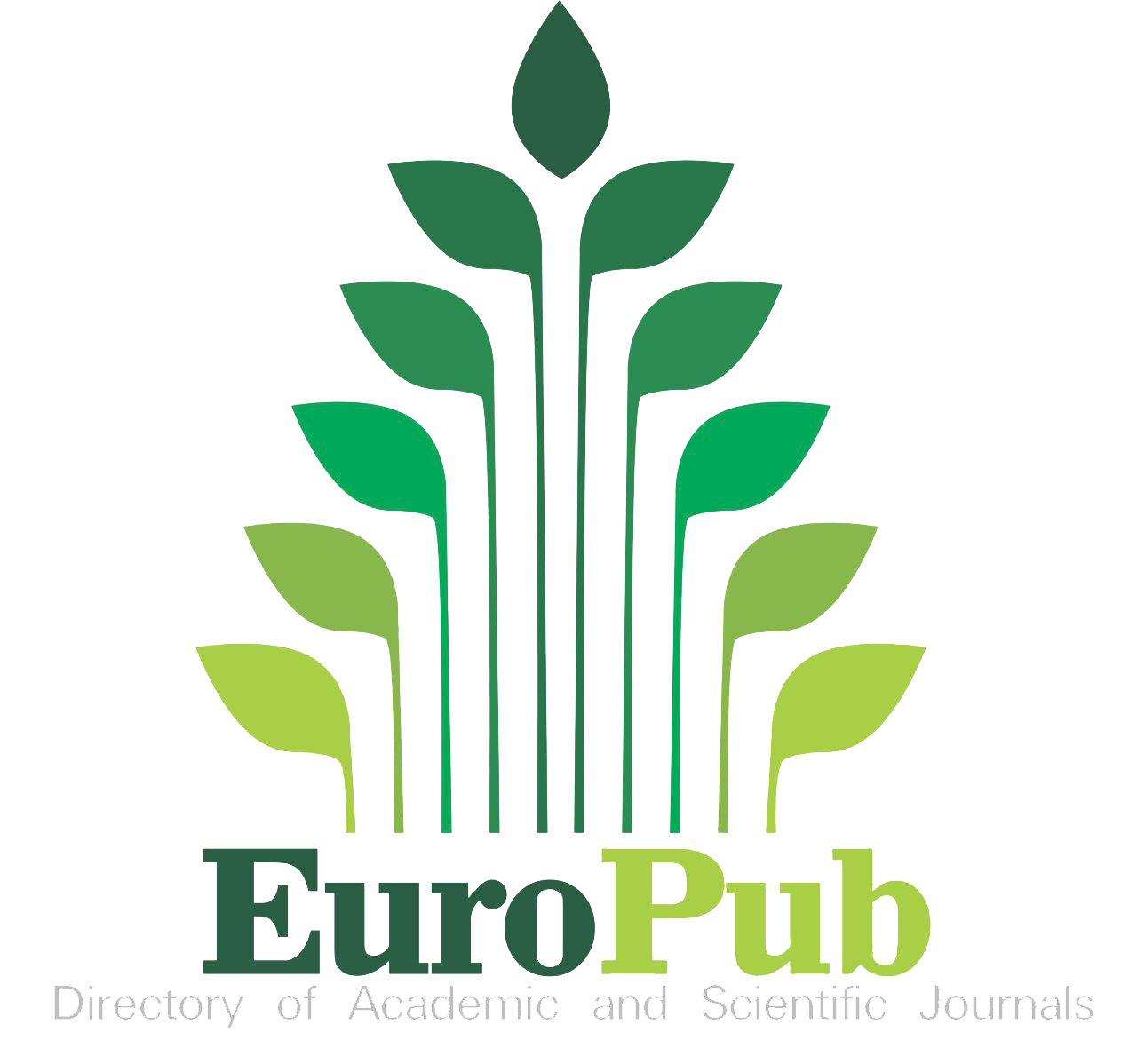Resource Recovery Potential of Limuru Municipality Abattoir Waste
DOI:
https://doi.org/10.54536/ajec.v4i2.4386Keywords:
Abattoir, Anaerobic Digestions, Biogas, Bio-Slurry, MunicipalityAbstract
Municipalities are entrusted with solid waste management to avoid rapid fill-up of landfills, provide apt sustainable solid waste management solutions, and mitigate greenhouse gas emissions. Slaughterhouses are major contributors to environmental degradation, water pollution and global warming. In the current study, the waste generated from animal slaughter houses in Limuru was calculated, the potential of Limuru municipality slaughterhouse waste to generate biogas and bio-electricity and organic bio-fertilizer investigated and the waste greenhouse gases emission potential was also computed. Inadequate information on abattoir resource recovery and utilization formed the need for this cross-sectional study conducted from January to March 2024. Four selected slaughter houses in Limuru municipality, Kenya, were selected; namely Limuru, Bahati, Makutano and Ngecha. Aniebo mathematical computation models were used to determine the amount of slaughterhouse from the number of animals processed. The results exhibited that 1739.479 tonnes of abattoir waste is generated annually. Anaerobic digestion produced 92.1924 m3 of biogas annually as per the Rao model. This translated to electricity production potential of 49.3229 kWh p.a and heat production potential of 71.4484 kWh p.a as a form of resource recovery. There was 549.0512 m3 reduction of greenhouse gases using biogas technology which translated to positive impact on environmental safety, public health and GHG emission reduction.
Downloads
References
Aniebo, A. O., Wekhe, S. N., & Okoli, I. C. (2009). Abattoir blood waste generation in Rivers State and its environmental implications in the Niger Delta. Toxicological & Environmental Chemistry, 91(4), 619–625.
Banks, C. (2009). Optimization of anaerobic digestion to provide energy output via conversion. Forestry Commission. Retrieved from http://www.forestry.gov.uk/pdf/.../rrps_AD250309_optimising_anaerobic_digestion.pdf
B-sustain. (2013). Environmental and social benefits of biogas technology. B-sustain. Retrieved from http://www.bsustain.in/faqs.html
Chakraborty, R., Gupta, A. K., & Chowdhury, R. (2014). Conversion of slaughterhouse and poultry farm animal fats and wastes to biodiesel: Parametric sensitivity and fuel quality assessment. Renewable and Sustainable Energy Reviews, 29, 120–134.
Darch, T., Dunn, R. M., Guy, A., Hawkins, J. M. B., Ash, M., Frimpong, K. A., et al. (2019). Fertilizer produced from abattoir waste can contribute to phosphorus sustainability, and biofortify crops with minerals. PLOS ONE, 14(9), e0221647.
Deublien, D., & Steinhauser, A. (2008). Biogas from waste and renewable resources. Wiley-VCH Verlag GmbH & Co.
EEPCO/Ethiopian Electric Power Corporation. (2018). Retrieved from http://www.ethio.energyconversionresource
IPCC/Intergovernmental Panel on Climate Change. (2000). National greenhouse gas inventories and uncertainty management in national greenhouse gas inventories. IPCC National Greenhouse Gas Inventory Program. Retrieved from http://www.ipcc-nggip.iges.or.jp/public/gp/gpgaum.htm
JGCRI/Joint Global Change Research Institute. (2018). GCAM v4.4 documentation: Global Change Assessment Model (GCAM). Retrieved from http://jgcri.github.io/gcam-doc/
Kabeyi, M., & Olanrewaju, O. (2022). Slaughterhouse waste to energy in the energy transition with performance analysis and design of slaughterhouse biodigester. Journal of Energy Management and Technology, 6(3), 188-208.
Khan, R. L., Khraibi, A. A., Dumée, L. F., & Corridon, P. R. (2023). From waste to wealth: Repurposing slaughterhouse waste for xenotransplantation. Frontiers in Bioengineering and Biotechnology, 11, 1091554.
Kupusovic, T., Midzic, S., Silajdzic, I., & Bjelavac, J. (2007). Cleaner production measures in small-scale slaughterhouse industry—Case study in Bosnia and Herzegovina. Journal of Cleaner Production, 15, 378–383.
Montford, K. J., & Wotherspoon, T. (2021). The contagion of slow violence: The slaughterhouse and COVID-19. Animal Studies Journal, 10(1), 80–113.
Mitchie, R. (2022). Entity-level greenhouse gas emission of University of Science and Technology of Southern Philippines-Oroquieta. American Journal of Environment and Climate, 1(3), 6–11. https://doi.org/10.54536/ajec.v1i3.665
Mbugua, J. K., Kinyua, A. P., Mbui, D. N., Kithure, J. L., Wandiga, S. O., & Waswa, A. G. (2022). Microbial fuel cell bio-remediation of lambda cyhalothrin, malathion, and chlorpyrifos on loam soil inoculated with bio-slurry. American Journal of Environment and Climate, 1(1), 34–41. https://doi.org/10.54536/ajec.v1i1.249
Ngumah, C., Ogbulie, J. N., Orji, J. C., & Amadi, E. S. (2013). Biogas potential of organic waste in Nigeria. Journal of Urban and Environmental Engineering, 7(1), 110–116.
Odero, J., Rao, K. C., & Karanja, N. (2018). Power from slaughterhouse waste (Nyongara Slaughter House, Dagorretti, Kenya). In K. C. Rao & S. Gebrezgabher (Eds.), Energy recovery from waste (Ch. 5, pp. 248–256). Taylor & Francis.
Rao, M. S., Singh, S. P., Singh, A. K., & Sodha, M. S. (2000). Bioenergy conversion studies of the organic fraction of MSW: Assessment of ultimate bioenergy production potential of municipal garbage. Applied Energy, 66(1), 75–87.
Ragályi, P., & Kádár, I. (2012). Effect of organic fertilizers made from slaughterhouse wastes on yield of crops. Archives of Agronomy and Soil Science, 58, S122–S126.
Rohstoffe, F. N. (2012). Guide to biogas from production to use. Federal Ministry of Food, Agriculture and Consumer Protection; Fachagentur Nachwachsende Rohstoffe e.V. (FNR).
Ware, A., & Power, N. (2016). Biogas from cattle slaughterhouse waste: Energy recovery towards an energy self-sufficient industry in Ireland. Renewable Energy, 97, 541–549.
UNFCCC. (2015). Biogas from animal waste: A key source of methane and carbon dioxide emissions. United Nations Framework Convention on Climate Change.
Downloads
Published
How to Cite
Issue
Section
License
Copyright (c) 2025 Mbugua J. K, Waswa A. G, Mbui D. N

This work is licensed under a Creative Commons Attribution 4.0 International License.








